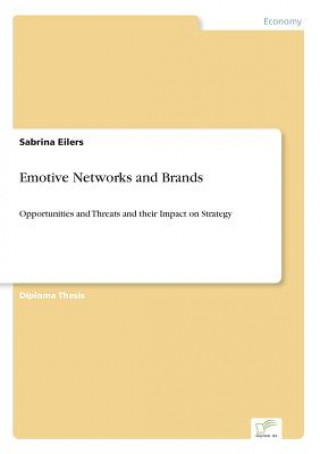
Consegna
Guida all'acquisto





Non ti piace? Non importa! Puoi restituircelo entro 30 giorni
 Buono sconto
Di qualsiasi valore
Buono sconto
Di qualsiasi valore
Non puoi sbagliarti con un buono regalo. Con il buono regalo, il destinatario può scegliere qualsiasi prodotto della nostra offerta.
Emotive Networks and Brands
 Inglese
Inglese
 263 b
263 b
30 giorni per il reso
Potrebbe interessarti anche


Diploma Thesis from the year 2003 in the subject Business economics - Marketing, Corporate Communication, CRM, Market Research, Social Media, grade: 1,0, University of Applied Sciences Dortmund (unbekannt), language: English, abstract: Inhaltsangabe:Abstract:§Brands have existed for several hundreds of years. Farmers used to brand their cattle by burning a mark into their fur. Others engraved initials into their valuables. The mark showed who the possession belonged to or where the cattle or goods originated from. This tradition still lives on in the logos, names, symbols and designs companies give to their products and services to distinguish their offers from the others the competitors.§From a simple marking of possessions and origin, branding has come a long way. Nowadays, companies invest a great amount of resources into building, maintaining and nurturing their brands. In acquisitions, companies pay a huge amount of money for a brand. Take Nestlé s acquisition of Rowntree, which owns brands like Kit Kat and Smarties, as an example. Nestlé paid five times the net asset value of Rowntree in order to acquire stable brands.§Why do companies pay such large sums of money for an invisible asset like a brand? The answer is simple: consumers do the same. Studies showed that consumers pay a far higher price for a product or service of a well-known brand they trust than for a comparable offer from a less well-know brand. Brands make up for a big chunk of a firm s revenues today and make sales predictable.§As Internet and mobile communication grows in terms of users and becomes more important in their users lives, brands are unsure of how to handle this new medium in the digital age, since market dynamics have changed. Competition is more fierce, rumours spread worldwide in no time and brands lose emotional touch with their target segment. This change has been facilitated by online and mobile communication of peers. People have always formed peer networks, but today these networks are much more powerful and quicker.§Networks of consumers take over and steal power from established brands. Shell witnessed a worldwide protest against its plans of sinking the oil platform Brent Spar into the North Sea. Consumers avoided Shell stations and supported Greenpeace. Rumours of sweat shops in Asia run by Nike and Reebok have led to loss of face as a result of worldwide protests. On top of these threats, brands have to face the fact that they have no chance fighting these networks of consumers. At the same time, peer networks also open up many opportunities like a customized and personalized approach to every individual.§At the beginning of last century, the owner of a general store knew his customers. He knew every member of the family, the profession of the head of the family, the house the family lived in and which products they usually purchased. Based on this knowledge, the owner of the general store was able to make specific product suggestions. He was aware of the financial situation and therefore especially successful in individual pricing for not-everyday products. Purchasing products used to be an experience combining two-way communication and personalized treatment.§In the meantime, most general stores have disappeared, less staff is employed for an increasing number of consumers. Almost no store clerk knows the shoppers names, let alone their family constellation or specific needs. Brands communicate their messages by broadcasting it over the major media, such as the television. Marketers cannot distinguish between loyal and non-loyal customers, cannot develop insight into the specific needs and the personality of individuals.§Now, one hundred years later, marketers have the opportunity to make a personalized connection to consumers again. In the digital world, brands have the opportunity to build strong and lasting relationships with customers, based on t...
Informazioni sul libro
 Inglese
Inglese


 Contatto
Contatto Come acquistare
Come acquistare























